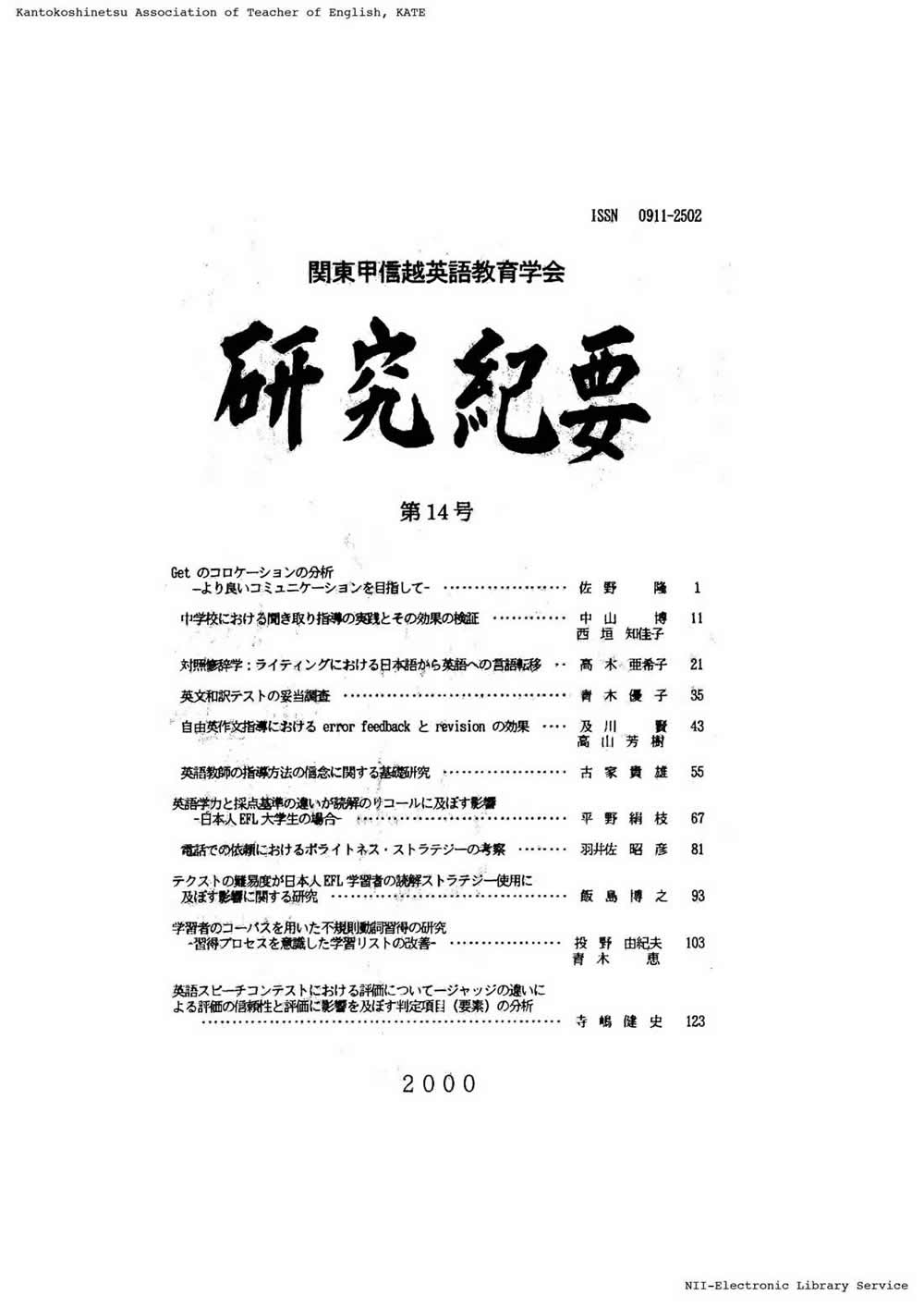Volume 14
Displaying 1-17 of 17 articles from this issue
- |<
- <
- 1
- >
- >|
-
Article type: Cover
2000 Volume 14 Pages Cover1-
Published: March 01, 2000
Released on J-STAGE: July 14, 2017
Download PDF (45K) -
Article type: Cover
2000 Volume 14 Pages Cover2-
Published: March 01, 2000
Released on J-STAGE: July 14, 2017
Download PDF (45K) -
Article type: Article
2000 Volume 14 Pages 1-10
Published: March 01, 2000
Released on J-STAGE: July 14, 2017
Download PDF (605K) -
Article type: Article
2000 Volume 14 Pages 11-19
Published: March 01, 2000
Released on J-STAGE: July 14, 2017
Download PDF (848K) -
Article type: Article
2000 Volume 14 Pages 21-33
Published: March 01, 2000
Released on J-STAGE: July 14, 2017
Download PDF (894K) -
Article type: Article
2000 Volume 14 Pages 35-42
Published: March 01, 2000
Released on J-STAGE: July 14, 2017
Download PDF (715K) -
Article type: Article
2000 Volume 14 Pages 43-54
Published: March 01, 2000
Released on J-STAGE: July 14, 2017
Download PDF (996K) -
Article type: Article
2000 Volume 14 Pages 55-65
Published: March 01, 2000
Released on J-STAGE: July 14, 2017
Download PDF (1637K) -
Article type: Article
2000 Volume 14 Pages 81-92
Published: March 01, 2000
Released on J-STAGE: July 14, 2017
Download PDF (918K) -
Article type: Article
2000 Volume 14 Pages 93-101
Published: March 01, 2000
Released on J-STAGE: July 14, 2017
Download PDF (877K) -
Article type: Article
2000 Volume 14 Pages 103-122
Published: March 01, 2000
Released on J-STAGE: July 14, 2017
Download PDF (1482K) -
Article type: Article
2000 Volume 14 Pages 123-138
Published: March 01, 2000
Released on J-STAGE: July 14, 2017
Download PDF (1392K) -
Article type: Appendix
2000 Volume 14 Pages App1-
Published: March 01, 2000
Released on J-STAGE: July 14, 2017
Download PDF (33K) -
Article type: Appendix
2000 Volume 14 Pages App2-
Published: March 01, 2000
Released on J-STAGE: July 14, 2017
Download PDF (33K) -
Article type: Appendix
2000 Volume 14 Pages App3-
Published: March 01, 2000
Released on J-STAGE: July 14, 2017
Download PDF (33K) -
Article type: Cover
2000 Volume 14 Pages Cover3-
Published: March 01, 2000
Released on J-STAGE: July 14, 2017
Download PDF (51K) -
Article type: Cover
2000 Volume 14 Pages Cover4-
Published: March 01, 2000
Released on J-STAGE: July 14, 2017
Download PDF (51K)
- |<
- <
- 1
- >
- >|
